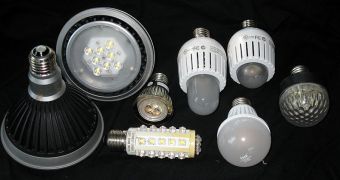Some time ago, we learned about attempts to transmit data via visible light, and it actually was achieved, even though the issue of physical obstructions arose. Now, it is suggested that light bulbs could become alternatives to Wi-Fi.
What many people might not know, or realize the implications of, is that light is just the part of the electromagnetic spectrum we can see with our eyes.
Radio waves are the same, as are Wi-Fi signals, Bluetooth signals, etc. They are all electromagnetic waves separated by a difference in wavelength (frequency).
To put things into perspective, visible light has the frequency of a Wi-Fi signal multiplied by about 100,000 times.
It also has the potential to set a much higher limit to the bandwidth, enabling much more data to be transmitted per second (the lower the frequency of the wave, the less it can transmit).
Light should also be free of the congestion issue that Wi-Fi networks suffer from (performance drops the more people connect to it).
So, presumably, if you could, say, integrate light-based Internet into a lamp, you could have 10 times better wireless web support than via Wi-Fi, so long as you let the light fall directly on your laptop's/router's receiver.
The thing is, to make this work, the light would have to flicker very rapidly, and we all know that flickering lights are annoying at best and tiresome at worst.
Then again, the flickering would happen at billions of times per second, so the human eye wouldn't perceive it. It might still cause eye strain though, and it's not like light bulbs are made to withstand such high-speed, constant energy fluctuations for long.
Still, this “Li-Fi” might be the only way forward, since next-generation Wi-Fi has the same limitations but a much lower performance. Next-gen Wi-Fi relies on a higher range of radio frequencies, which aren’t as crowded with other signals, but those frequencies can't penetrate Walls, much like Li-Fi.
Researchers at Fudan University in Shanghai are the latest to demonstrate a technology that transmits data as light instead of radio waves.

 14 DAY TRIAL //
14 DAY TRIAL //